15 Things to Know Before Travelling to Portugal in 2025
There are so many little things to know before travelling to Portugal that no one tells you until it’s too late…
Like how cash is still king in some cafés or how brutally hilly Lisbon can be when you’re dragging a suitcase uphill in 35 degree heat. Yes, I’m speaking from experience on that one!
So this post is here to make sure none of that catches you off guard.
Whether you’re planning your first trip to Portugal or just want to feel fully prepared for your next, I’ve got you.
I’ve travelled Portugal top to bottom – by train, by bus, by guided tour, on foot (so many hills!) – and I’ve made all the mistakes so you don’t have to.
From getting completely sunburnt in Evora to learning the hard way what to pack (and what not to pack), I’ve collected the kind of insights you only get from actually visiting Portugal. And if you’re a solo female traveller? Same, welcome, we’re speaking the same language here!
This guide is everything I genuinely wish I’d known before visiting Portugal for the first time, like when to go for sunshine without the crowds, how to avoid tourist traps, and where to find the real soul of the country (hint: it’s not always in the big cities!)
So, let’s get into the 15 most important, genuinely helpful things to know before going to Portugal in 2025!
Portugal Fact File (2025 Edition)
Capital: Lisbon
My Favourite Portugal Hidden Gem: Amarante
Language: Portuguese (but English is widely spoken in tourist areas)
Currency: Euro (€)
Plug Type: Type C & F (European standard 2 pin)
Timezone: GMT (or GMT+1 in summer – it’s the same as the UK!)
Tap Water: Safe to drink across the country, but it can have a strong taste and locals tend to drink bottled water
Card Payments: Widely accepted, but always carry cash for emergencies, small cafes and visiting more rural areas
Public Transport: Reliable and cheap – trains and buses run frequently, especially between major cities
Safety: Very safe for solo female travellers, with low violent crime, especially in tourist areas. But pickpocketing and petty theft can happen, so remember to stay vigilant in busy spots.
1. Portugal Isn’t Just Lisbon and Porto
Let’s kick this off with one of the most important things to know before travelling to Portugal: this beautiful country has SO MUCH more to offer than just Lisbon and Porto.
Don’t get me wrong, those cities are both gorgeous in their own rights and are absolutely worth visiting, but if that’s all you see of Portugal, you’re missing out big time!
Portugal is full of small towns, hidden gems, vineyards and inland villages that feel totally untouched by the mass tourism in the bigger cities. Plus, these places are not only stunning, but feel so much more relaxed, affordable and authentic.
So if you’ve got time, travel out to places like Evora (a seriously underrated UNESCO city), Guimaraes (Portugal’s first ever capital city), or Amarante (a tiny riverside town with heaps of charm and zero crowds).
Or if you want beaches without the busyness of the Algarve? Head to Nazare or explore the wild coastline of Arrabida Natural Park.
I’m not saying you need to ditch Lisbon and Porto entirely from your itinerary, but you do need to know there’s a whole other side to Portugal that first-time visitors too often miss!
Katie’s Top Tip: Pick one lesser-known town, city or region and add it to your itinerary alongside the cities. That way, you’ll get a more well-rounded view of Portugal and almost always better food, quieter streets and cheaper accommodation too! Win win!
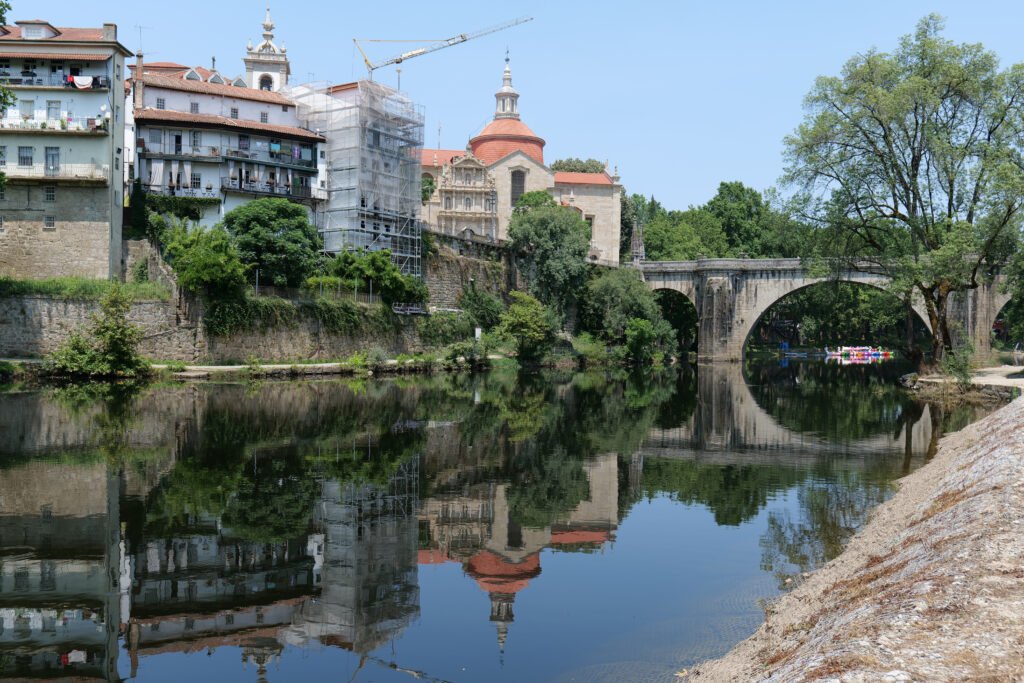
2. What to Pack (and What I Wish I Didn’t Bring)
Let’s talk packing – because I seriously overpacked on my very first solo trip to Portugal!
One of the most underrated things to know before travelling to Portugal is that the terrain, weather and style all are wildly varied depending on where you are in the country.
The cobblestones? Seriously uneven in smaller towns.
The hills? No joke anywhere in Portugal.
And don’t get me started on the microclimates! You can easily go from sunny in the morning, to blanket heat haze by lunchtime, then windy and chilly by sunset. This is especially true in places in the north of the country, like Porto, Braga and Guimaraes.
So, what should you actually pack for Portugal?
In all of my solo trips to the country, I now prioritise comfort over anything else (and actually this is the same anywhere in the world, just so you know!)
That means…
- Comfortable walking shoes with good grip (I swear by Skechers Trainers or Hotter Go Walk Sandals, if you’re interested!)
- Lightweight layers
- A trusty and versatile scarf
- A packable waterproof jacket.
Oh and leave the heels, hair tools and those extra jeans you swear you need at home… I swear you won’t use them!
You also won’t need a full-face of makeup (unless you want to, of course). Portugal is so much more laid-back than it is glamorous, especially outside of Lisbon.
And don’t forget suncream (yep, all year round, including in winter!), a reusable water bottle and a basic, unassuming crossbody bag that zips shut for added safety in touristy areas.
Katie’s Top Tip: Packing cubes are your best friend. Portugal’s sometimes unpredictable weather means you’ll be swapping outfits often, and being able to grab layers quickly is so important. Also, I learned this the hard way and got serious FOMO: bring swimwear all year round! You never know when you’ll be in the mood for a swim, spa day or sunny beach day.
3. The Best Time to Visit Portugal (It’s Not When You Think)
Repeat after me: peak summer is not necessarily the best time to visit Portugal.
In fact, I would argue it’s not a very good time to visit Portugal at all. And yes, I know that’s controversial.
July and August might be the most popular months to visit Portugal, but they’re also the hottest, most expensive and the most crowded – especially in coastal towns in the Algarve and of course, in the major cities.
Public transport gets overcrowded or even fully booked up, the streets are packed, and you’ll sweat through your clothes by noon. Again, I’m speaking from the experience of climbing Lisbon’s hills in 35 degree heat… Major regrets were felt!
So when is the best time to visit Portugal? In my opinion, during the shoulder season! (And again, this is true for 99% of places in Europe).
In Portugal, shoulder season is May–June and September–October.
The weather is still warm and sunny, the sea is still swimmable, but the crowds thin out in a huge way and, because of that, prices drop.
But if you can’t or don’t want to travel during shoulder season? Even winter has its perks and is, again in my opinion, a better option than the summer.
Winter is especially lovely in the south… think quiet streets in Lagos or Tavira, dreamy sunsets and much lower accommodation costs. Plus, fewer tourists means a more relaxed, local vibe. And you get to come back from your trip with a smug, winter tan! Is there any better kind?!
Katie’s Top Tip: If you’re a solo female traveller looking for that perfect mix of good weather, affordability and atmosphere, aim for the last two weeks of September. It’s still beach weather, but without the huge crowds and, from my experience, I’ve found accommodation is often a huge 30–50% cheaper than in July/August. Run, don’t walk. I’ll see you there!
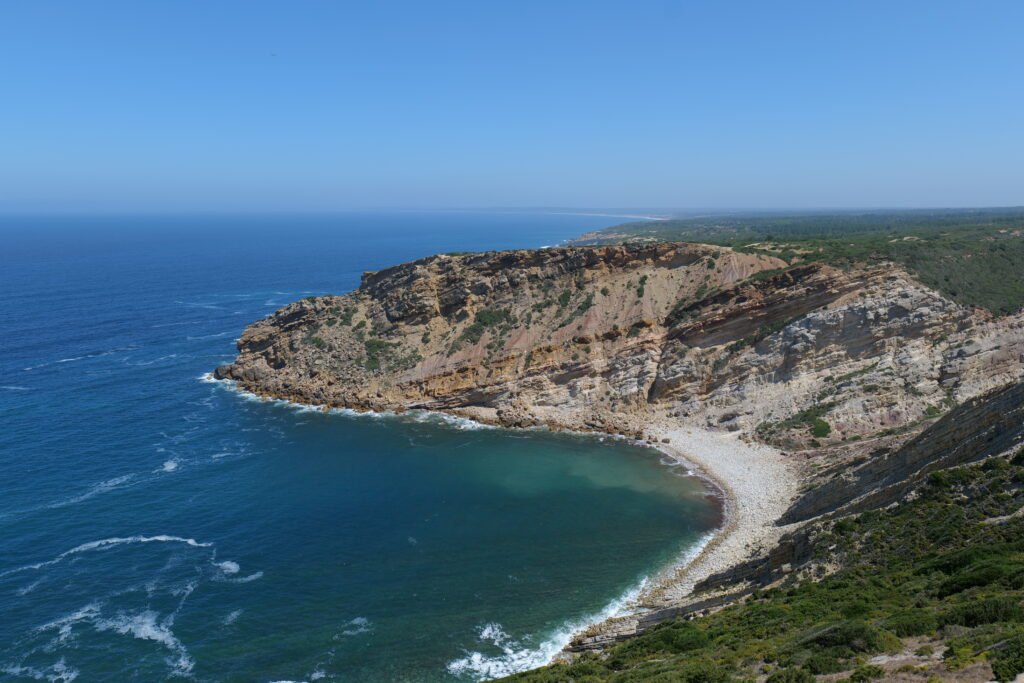
4. Public Transport is Great… But Not Everywhere
Public transport in Portugal is surprisingly good, especially compared to other southern European countries.
Trains between major cities like Lisbon, Porto, Coimbra, Braga and Faro are clean, reliable, comfortable and affordable. But be sure to book early online with cp.pt for the best deals. You can thank me later!
Metro and tram systems in Lisbon and Porto are easy to navigate, both within the city centres and to and from the international airports. Plus, both Lisbon and Porto have transport cards to make the buying process easier and more affordable. In Lisbon, this is the Viva Viagem card. In Porto, this is the Andante Card.
Long-distance buses in Portugal are also reliable, and most routes are run by Rede Expressos, ALSA and FlixBus. You can book online for almost all services, which makes intercity travel smooth and affordable. Plus, these buses don’t just serve the big cities. You can also get to hidden gems in Portugal like Amarante and Evora.
However, public transport does get patchy in rural areas, small towns and villages.
For example, want to visit vineyards in the Douro Valley and explore the surrounding countryside? You’ll need a car or a guided tour.
This is one of those important things to know before travelling to Portugal if you’re planning to explore beyond the cities.
Katie’s Top Tip: Plan your itinerary around train and bus routes if you don’t want to rent a car. I love Rome2Rio for planning, but always, always double-check important details with the actual service provider, whether that’s Flixbus, Rede Expressos or CP. Timetables can and do change, and not everything you see online from a 3rd party is up to date.
5. Your Accommodation Matters (More Than You Think)
Portugal might be one of the safest and friendliest countries in Europe, but where you stay still has a huge impact on your trip.
And that’s especially true if you’re a solo female traveller like me.
One of the biggest things you should know before travelling to Portugal is that accommodation styles and standards vary a lot.
Some hostels are social and modern, but others feel outdated and a lil bit sketchy. Some Airbnbs look dreamy in photos but end up being noisy or miles from the centre. And hotel star ratings? They don’t always reflect reality, so always read independent reviews rather than relying on one number to guide you.
Especially if you’re travelling alone, location and the overall vibe of the property and surrounding area matter so much more than luxury or affordability.
Prioritise places with walkable access to main tourist sights, good lighting at night and real reviews, preferably from solo travellers (you can filter by this on sites like booking.com!)
Bonus points if your accommodation has a shared lounge, garden space or breakfast area. As someone who doesn’t like to stay in hostels, I’ve found it’s a great, low pressure way to meet other travellers without committing to a full hostel experience.
I also always check if the building has a lift. Seriously, that five-story, boutique apartment complex may look cute, but those stairs are no joke when you’re tired and have luggage! And this is coming from someone who has made this common solo travel mistake many times. In Lisbon. In Annecy. In Venice. In Rome. Etc, etc. And I’ve always regretted it!
Katie’s Top Tip: Use platforms like Booking.com with solo travel filters, and always cross-check listings on Google Street View to see the real neighbourhood – never book on promo photos alone. Also look for keywords like “quiet at night,” “great for solo travellers,” or “close to everything.”
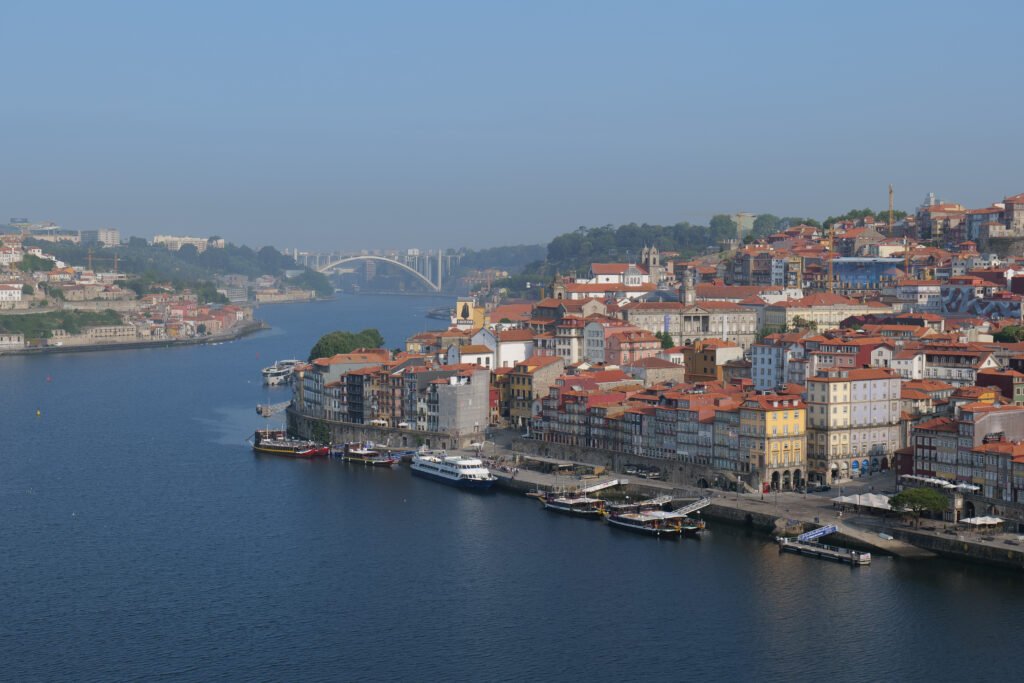
6. Don’t Rely on Card Only – Cash Still Matters
It’s tempting to assume everywhere in Europe takes cards these days, and while Portugal is generally pretty card-friendly (especially in Lisbon and Porto), there are still plenty of moments where cash is king.
Small bakeries, tourist tax in guesthouses, taxis, local markets and even some cafes are just some of the examples of where I’ve personally experienced cash-only service in Portugal.
ATMs are easy to find in Portugal, but it is important to keep in mind that many of them (especially Euronet machines), charge very high withdrawal fees.
So if you can, try to limit ATM use to emergencies and instead bring enough euros for your trip (plus an added safety buffer amount), from home.
To purchase euros in the UK, you can go to a supermarket’s travel money counter or buy online. I assume this is similar elsewhere too.
If you do have to use an ATM in Portugal, try to find one from a major bank (like Multibanco), as these usually have lower fees and more favourable exchange rates. It’s one of those important things to know before travelling to Portugal that can save you a lot of hassle (and money, of course!)
Katie’s Top Tip: Carry at least €20–€50 in cash with you at all times, especially if you’re heading outside the city. Because the only thing worse than not finding the perfect pastéis de nata in Portugal is finding one and not being able to buy it, right?!
7. Portuguese Food is Delicious (And Affordable)
Speaking of pastéis de nata, here’s something I really wish I’d known before visiting Portugal on my first solo trip: the food scene here is wildly underrated!
From flaky, custardy pastéis de nata to fresh seafood dishes, Portugal definitely knows how to do flavour well. And even better? It won’t break the trip budget!
You can easily eat well in Portugal for under €15 per person at traditional, local restaurants. (And this is especially true if you’re outside the most touristy areas.)
Many restaurants also offer daily lunch menus (or prato do dia), that include a main, drink and sometimes even dessert for a reduced price, so that’s definitely worth looking for too.
Katie’s Top Tip: Look for restaurants outside of the tourist centre or where locals are dining – especially at lunchtime. And if you see “Bifana” on the menu? And you eat pork? Get it. You can thank me later!
8. English is Common – But Learning a Few Portuguese Phrases Helps
In most Portuguese towns and cities, especially those connected with tourism, you’ll find plenty of people who speak fluent English.
Because of this, you’ll be totally fine navigating train stations, ordering at restaurants and asking for directions in Lisbon, Porto and the Algarve without the need for our trusty friend, Google Translate!
Having said that, you will still find areas (especially in the north or in more rural towns), where English isn’t spoken as widely, so learning a few phrases is key here.
Plus, it’s polite and shows respect for culture, no matter where you are in the country.
Even a simple “bom dia” (which means good morning), “obrigada” (which means thank you, if you identify as female), or “por favor” (which means please), can completely shift how you are received by locals.
People in Portugal are proud of their culture, and even the smallest effort to speak the local language gets you huge amounts of goodwill!
Katie’s Top Tip: If you’re heading off the tourist trail and need a bit more language than good morning, thank you, please, download offline Portuguese on Google Translate before your trip.
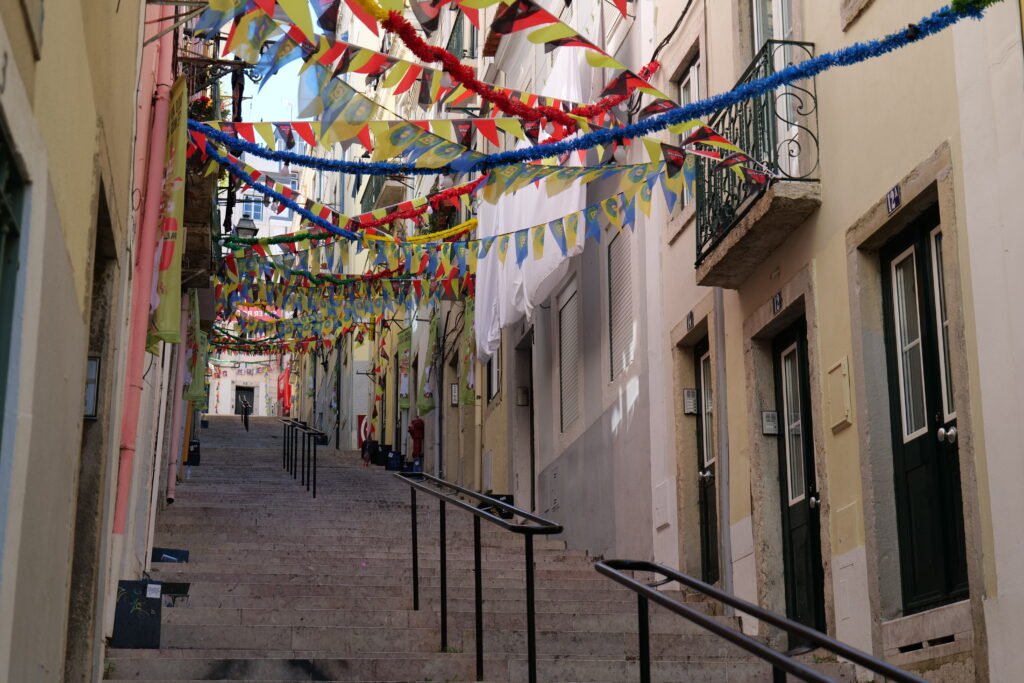
9. There’s No Tipping Culture
Tipping in Portugal isn’t expected in the same way it is in the US, and locals in Portugal will rarely leave a tip.
But having said that, it is always appreciated if you’ve had exceptional levels of service.
If they do tip, most locals don’t leave more than a euro or two at cafes or restaurants, and leaving 5–10% is considered very generous and unusual.
But the bottom line? Unlike other destinations and countries around the world, there’s no pressure here. So don’t stress about getting it wrong or offending people if you don’t leave a tip.
You’ll also rarely find service charges sneakily added to the bill, as tipping isn’t built into the local culture in the same way that it is elsewhere.
And if you don’t have cash to spare for a tip, you could always show appreciation in other ways, like leaving a 5 star review or making the effort to say a personal thank you.
Katie’s Top Tip: Keep some €1 and €2 coins on you if you do want to leave tips (or at least have the option to). That way, it’s easy to round up the bill or leave a couple of extra euros for great service.
10. What You Need to Enter Portugal in 2025
Let’s talk logistics, because figuring out what is needed to visit Portugal depends entirely on where you’re coming from. And no one wants to be that person left scrambling and panicked at the border because they forgot to check visa requirements or travel rules ahead of time.
Quick disclaimer though: I am not an immigration expert, and this section is for information only. It is accurate as of time of writing and I will do my best to keep it updated with any changes. But always make sure you visit the official government website to check up to date requirements.
EU/EEA travellers: You can travel to Portugal freely. No visa or special documentation is required. It is also not common to even have to show your documents at land borders or airports, but you should always travel with them just in case.
US travellers: You can also visit Portugal without a visa for up to 90 days in any 180-day period. However, from 2026, you will also need an ETIAS travel authorisation to enter Portugal. It’s not live yet but will be mandatory, so keep an eye on the official site and apply before your trip.
UK travellers: Post-Brexit, you can still visit Portugal visa-free for up to 90 days in any 180-day period. You’ll need at least six months left on your passport and must get it stamped at the border. You also need to be aware of the ETIAS changes, so keep an eye on official information.
All travellers: Make sure you have travel insurance, proof of onward travel (they don’t always ask, but it’s good to have just in case), and your accommodation booked or at least an address to give customs if asked.
Katie’s Top Tip: Bookmark the official EU ETIAS website and set a reminder for early 2026 if you’re from the UK or US.
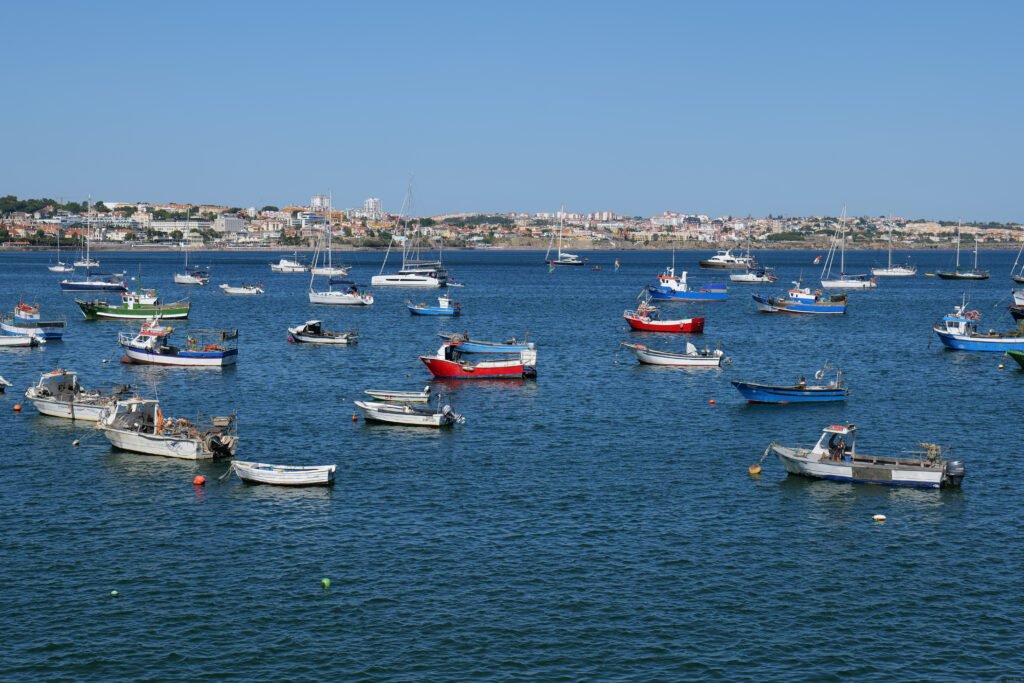
11. Safety, Scams & Street Smarts
According to the Global Peace Index, Portugal is one of the safest countries in the world and as a solo female traveller, I can tell you I’ve always felt comfortable walking around – even at night.
However, you’re still travelling in a new place, so being street-smart always helps.
Petty, opportunistic theft like bag snatching and pickpocketing can happen, especially in touristy areas like central Lisbon or Porto, on crowded trams (hi, Tram 28!), or at busy transport hubs like train or bus stations.
Scams aren’t super common in Portugal, but a few do pop up: dodgy tuk tuk or taxi drivers overcharging, fake petition scams (or anytime someone tries to distract you with a clipboard – be suspicious of clipboards!), or even people offering tourists drugs on the street, in extreme cases.
If any of those happen to you or something else doesn’t feel right, stay calm, ignore and walk away. Your safety matters more than politeness.
For a full guide to whether it is safe to visit Portugal as a solo female traveller, I have a whole blog post on exactly that!
Katie’s Top Tip: Use a crossbody bag, skip flashy jewellery and always trust your gut. I also always carry a backup card and some emergency cash in a separate spot in my backpack or in a safe in my accommodation, just in case.
12. You’ll Want a Local SIM (Or eSIM!)
WIFI is pretty widespread in Portugal’s cities, with a lot of cafes, restaurants and hotels offering it for free.
But if you’re navigating public transport, using Google Maps to get around, translating menus or booking last-minute trains or activities on the go, having your own data is so much easier.
In fact, I would say it’s an essential.
If you’re not from the EU, your home data plan may charge extortionate roaming fees – and no one wants a surprise bill spoiling their trip – so it’s smart to pick up a Portuguese SIM card or download an eSIM from Airalo when you arrive.
You can pick up affordable and reliable tourist SIMs from the airport or a phone shop in town. Often, they’re under €15 and come with generous data allowances. The best companies that offer these sims are Vodafone, MEO and NOS.
If you have a newer phone that supports eSIMs, apps like Airalo let you get set up in minutes without the faff of going to a shop and registering with a new network. You can buy your SIM package ahead of time, press to activate as soon as you land and you’re good to go. It really is as simple as that!
If you’re a UK traveller, good news for you, as a lot of UK providers (like Tesco Mobile and Smarty Mobile), still include some amount of EU roaming, even after Brexit. So make sure you double-check your existing phone plan before you splash out on a new SIM or eSIM unnecessarily.
Katie’s Top Tip: If you’re using a physical SIM, please don’t forget to bring that little stick thingy – which I have now been reliably informed by Google is called a sim ejector pin (!!) – to be able to open your phone’s SIM slot. Often they come with your phone when you buy it, but if you’ve lost yours (because same!) you can pick one up cheaply on Amazon.
13. Don’t Try to See It All in One Trip
Portugal may look like a small country on the map, but it’s very spread out, especially if you’re relying on public transport like trains, buses or even guided tours, instead of your own vehicle.
One of the biggest mistakes I made on my first trip to Portugal (and something I hear a lot from readers), was trying to squeeze too much into that first short, one week itinerary.
Lisbon, Porto, the Algarve, the Douro Valley, Sintra, Evora, even the Azores and Madeira… they’re all amazing and are well worth visiting in their own right.
But trust me when I say that cramming them into a 7 day trip will only leave you feeling exhausted and like you barely saw anything properly.
So, instead of rushing around, pick 1 or 2 main bases and explore those areas deeply.
For example, you could combine Lisbon + Sintra + a beach day in Cascais, or do a northern Portugal trip with Porto, the Douro Valley and Braga.
You’ll enjoy your trip so much more if you slow down, even just a little bit!
Katie’s Top Tip: Want help planning where to focus? I’ve written a whole blog post ranking the 11 Best Places to Visit in Portugal for First-Timers. It’ll help you decide what’s worth prioritising based on your own travel vibe and the kind of experiences you want (not just what Instagram says is popular!)
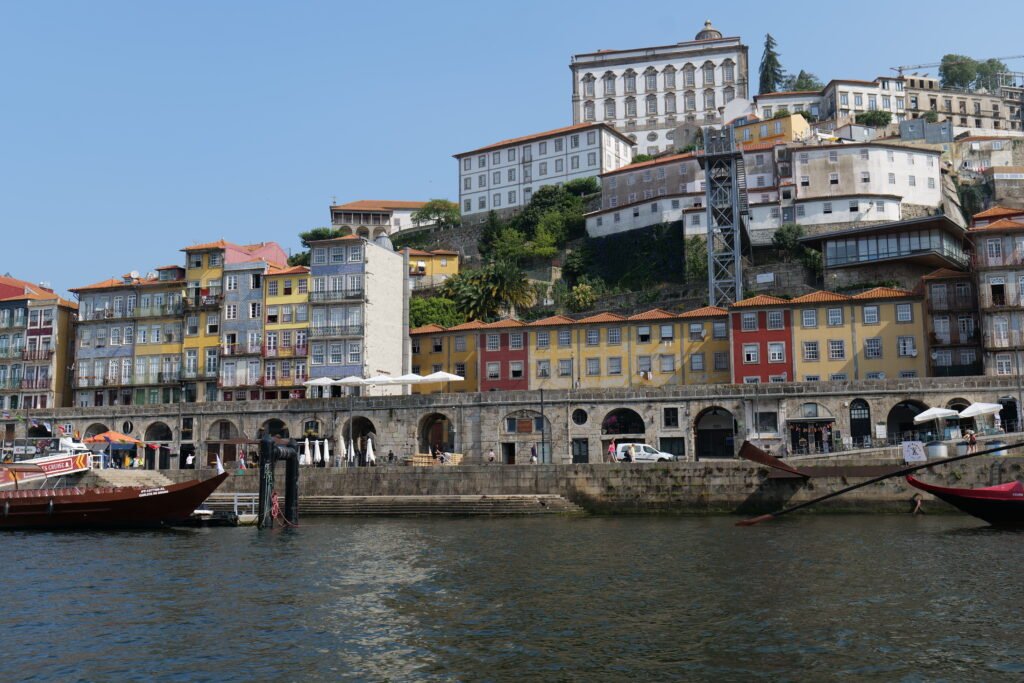
14. Pack Sturdy Shoes – Portugal is Hilly
Here’s a wildly underrated piece of Portugal travel advice I wish more people shouted about: Portugal is NOT the place for flimsy sandals or heels.
Lisbon, in particular, is built across seven steep hills, and even flatter (and take flatter with a pinch of salt – it’s still hilly!) cities like Porto have cobbled streets, uneven pavements and long staircases that will turn even a short city stroll into a cardio workout!
Good for skipping the gym during your trip, but not so fun in uncomfy shoes.
Then add to that the polished black and white traditional limestone tiles (aka calçada portuguesa), that get super slippery when wet, and suddenly those cute slides or heels just won’t cut it.
And I learned that the hard way after slipping twice in one day while exploring Alfama in Lisbon and limping back to my accommodation.
So trust me on this one: comfortable, grippy, supportive shoes will be your very best friend in Portugal.
Katie’s Top Tip: I also have funny feet with all of the arch support problems under the sun. (Yes, I have just admitted that on the internet!) So I always travel with my white, arch support trainers from either Skechers or Vionic and a pair of low-profile Go Walk sandals from Hotter – seriously, I’ve worn the same ones for three years now, they’re the real deal! Both trainers and sandals are cute enough for Portuguese cafés or restaurants (unless they’re ridiculously fancy), but also practical for hills and long days. Oh and don’t forget to break them in before your trip!
15. Portugal is Addictive – Plan to Come Back!
There’s just something about Portugal that feels magical – maybe it’s in the way the light hits Lisbon’s rooftops at sunset, the sound of fado music from a traditional tavern, the friendliness of the people, the delicious food, or the slower pace of life.
But whatever one (or more) of those things it is, Portugal is definitely the kind of country you think you can do once and that’s it, and then immediately start planning your return. Before you’ve even left!
And that’s what I want to leave you with in this guide, perhaps even the most important tip of all: Portugal isn’t just a checklist destination.
It’s a country that will surprise you, over and over again, in different, tiny ways.
Whether you’re travelling solo, with friends, or with family – whether you’re planning your very first trip or returning for the third time – Portugal always has something new to offer.
Katie’s Top Tip: As I said earlier, don’t stress about seeing it all in one trip. It’s just not possible anyway. Instead, give yourself the space in your itinerary to really experience Portugal, not just tick it off. And when (not if!) you start dreaming about coming back? You can come back and revisit this post all over again!
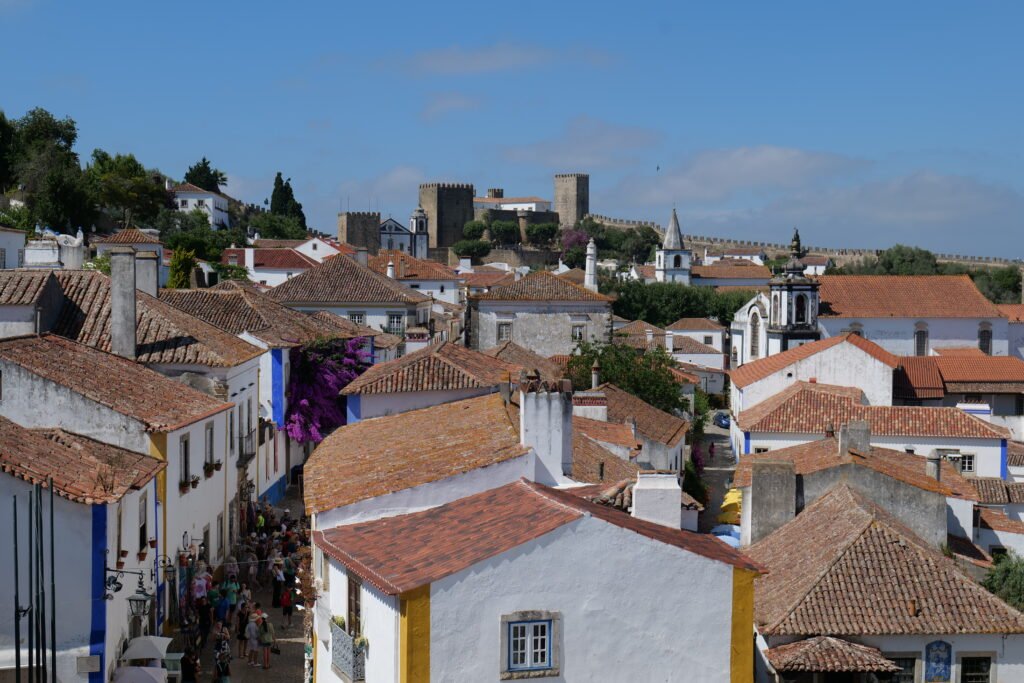
Things I Wish I Knew Before Visiting Portugal
Looking back, there are definitely a few other things I personally wish I knew before visiting Portugal, especially as a solo female traveller navigating a new country on my own:
First off, I had no idea how affordable Portugal would be compared to other parts of Western Europe. I’d been budgeting for my trip like I was going to Paris or Rome… but then I realised could get a full dinner, a glass of wine and dessert for under €20 from a local restaurant. I wish I’d let myself enjoy a few more treats instead of being so strict with my spending.
I also didn’t expect to fall so hard for the quieter, lesser-known places. Everyone talks about Lisbon and Porto (and for good reason – they’re amazing!), but it was places like tiny Amarante and the underrated city of Evora that really stayed with me, long after I returned home. I wish I’d given myself more time to go off the beaten path and slow down.
And another big one? The hills. My glutes were not ready for Lisbon’s hills or staircases, and my brand new, cute strappy sandals barely survived day two before I had to stick them back together with Sellotape. Yes, really! I’ve learnt my lesson the hard way. So I know I’ve said it before, but always pack for comfort first!
So, if you’re wondering about the top things to know before travelling to Portugal for the first time, let me summarise real quick: Plan less, explore slower, eat everything and don’t be afraid to get lost on purpose. Portugal will always surprise you when you least expect it.
Final Thoughts
So, there you have it – 15 (plus a few extra!) real, honest, useful things to know before travelling to Portugal in 2025.
Whether you’re wondering what’s needed to visit Portugal from the UK post-Brexit, curious about solo travel safety in Portugal or just want insider tips to make your trip easier and more memorable, I hope this guide has helped you feel prepared and excited.
Portugal is full of charming cobbled streets, tiny tiled cafes, salty sea air and friendly locals. It feels very safe as a solo female traveller, has a great sense of history and culture, is surprisingly affordable, and is perfect for any traveller wanting a true mix of city, coast and countryside.
So if this is your first time in Portugal, you’re in for something special. Enjoy!
And if you’ve been before? There’s always something – or somewhere – new to discover!
Read More About Travel in Portugal:
- Is Porto Safe For Solo Female Travellers? Porto Safety Tips
- How to Spend 3 Days in Porto: Your Perfect Porto Itinerary
- The 7 Best Day Trips From Porto (No Car Needed!)
- 17 Best Things To Do Alone in Lisbon For Solo Travellers
- 11 Best Day Trips from Lisbon You’ll Wish You Knew Sooner
Grab Your Solo Female Travel in Europe Starter Kit:
Pin Me For Later!
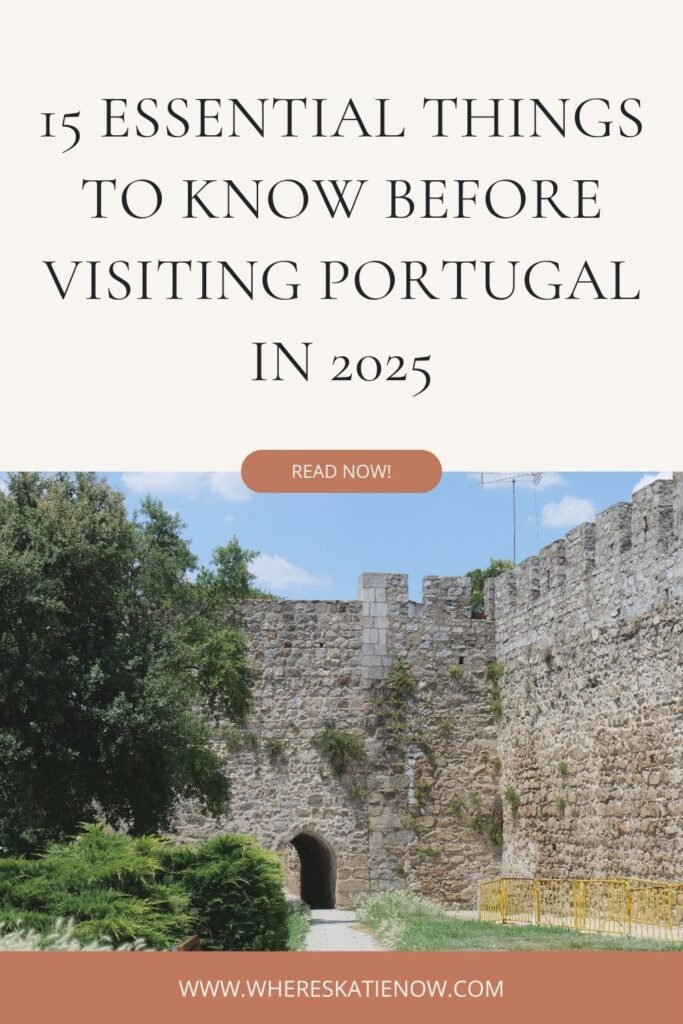
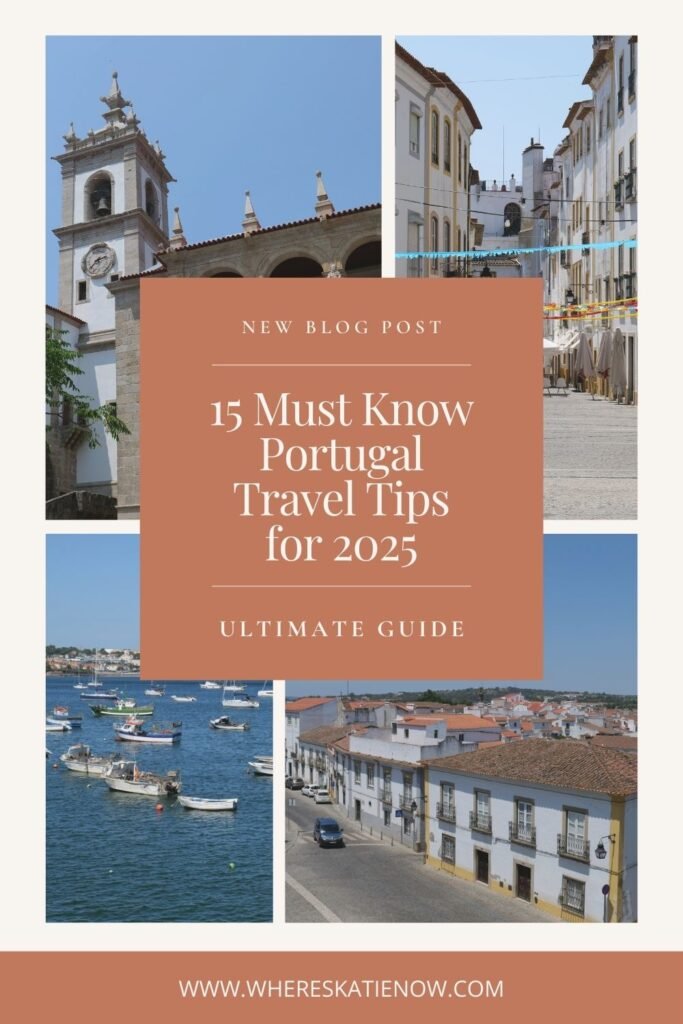
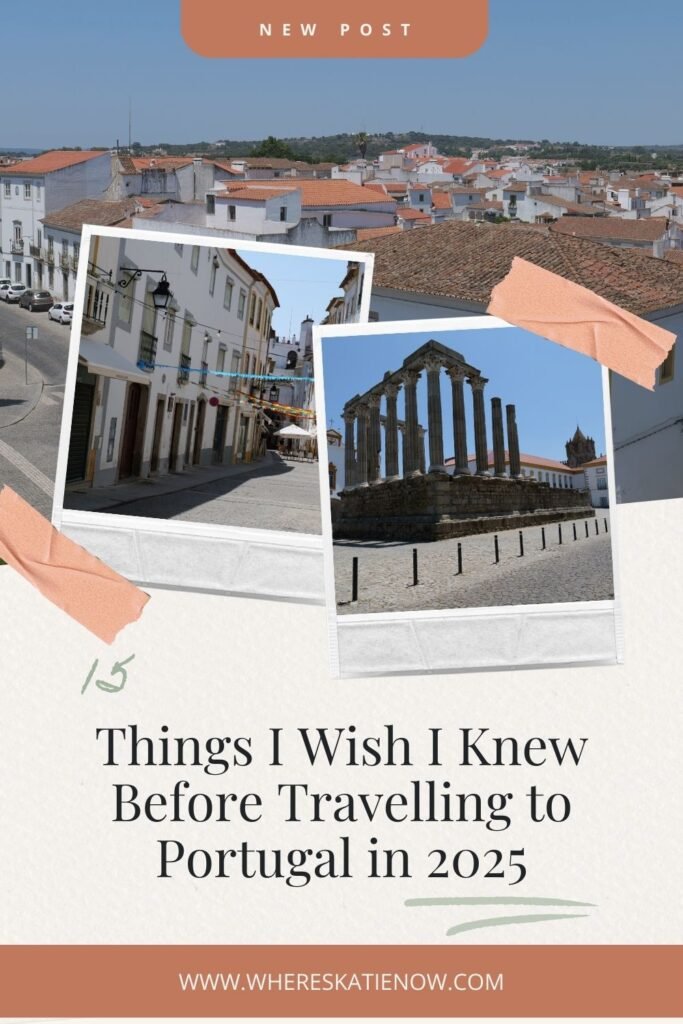


One Comment